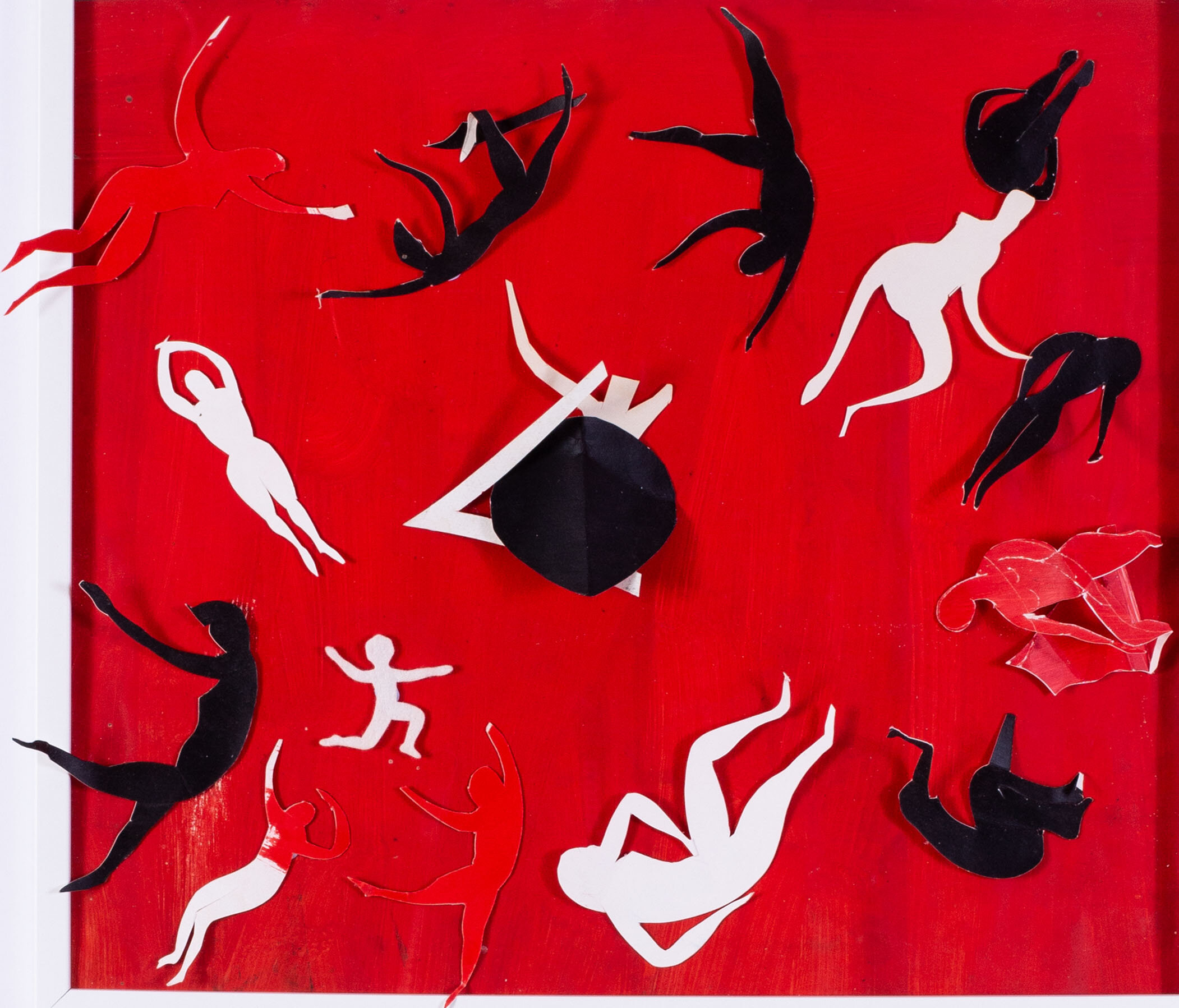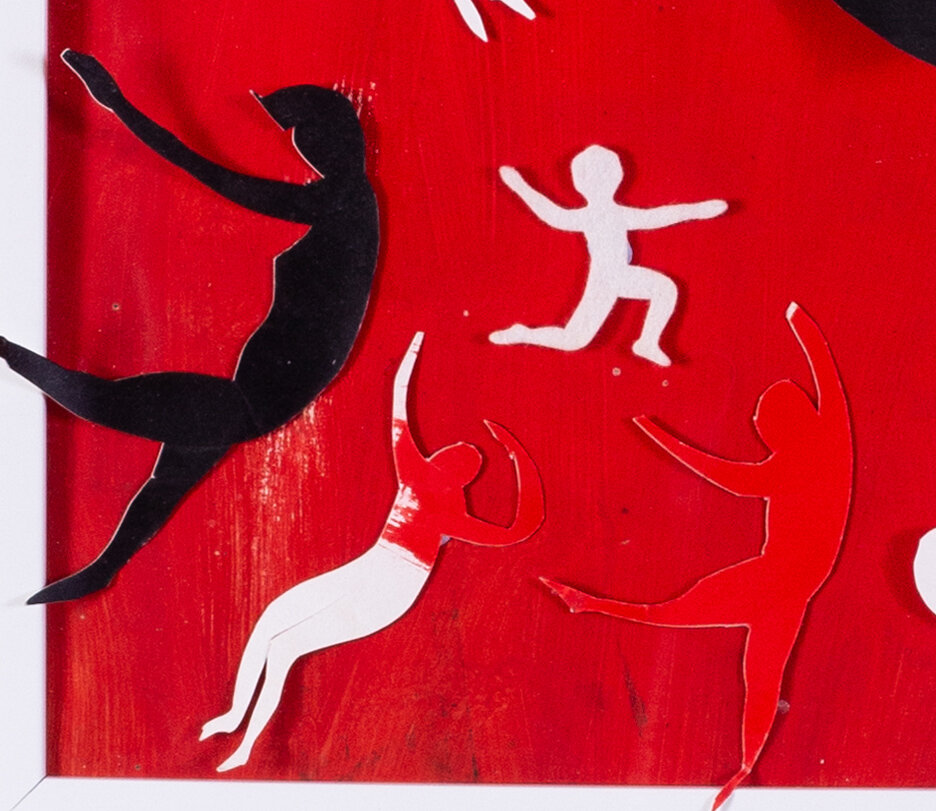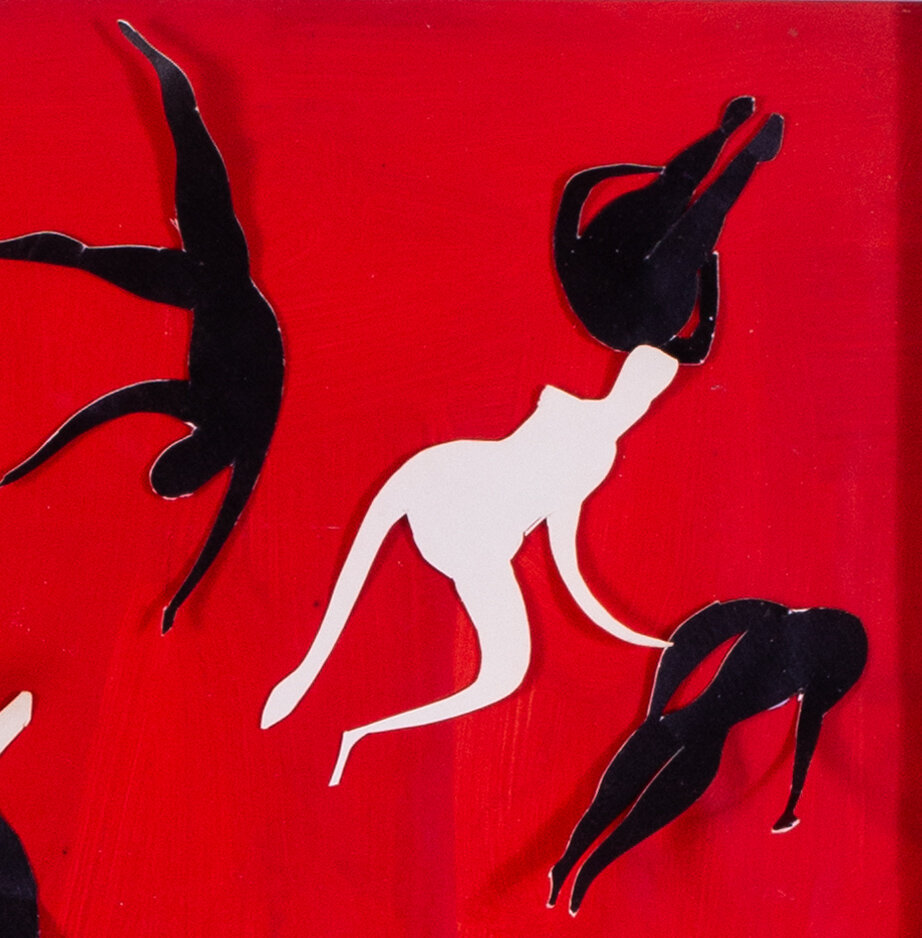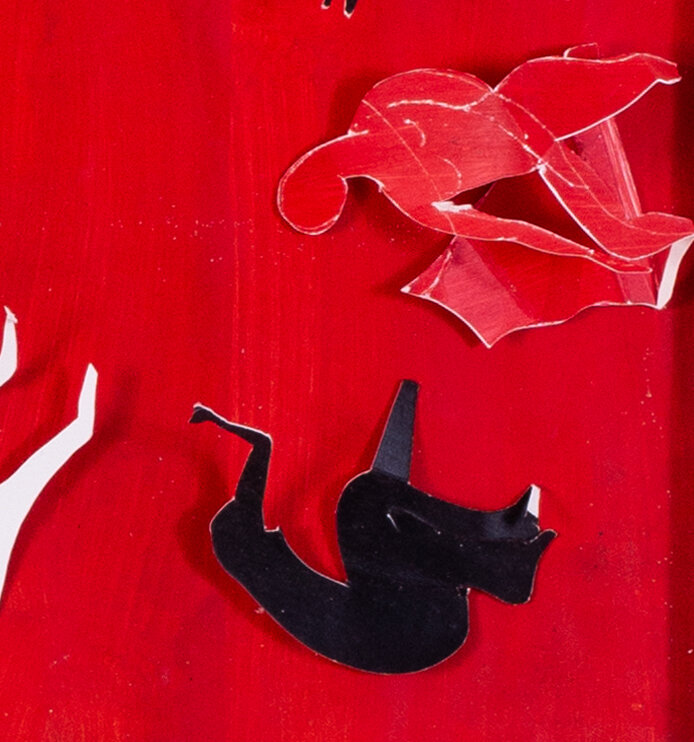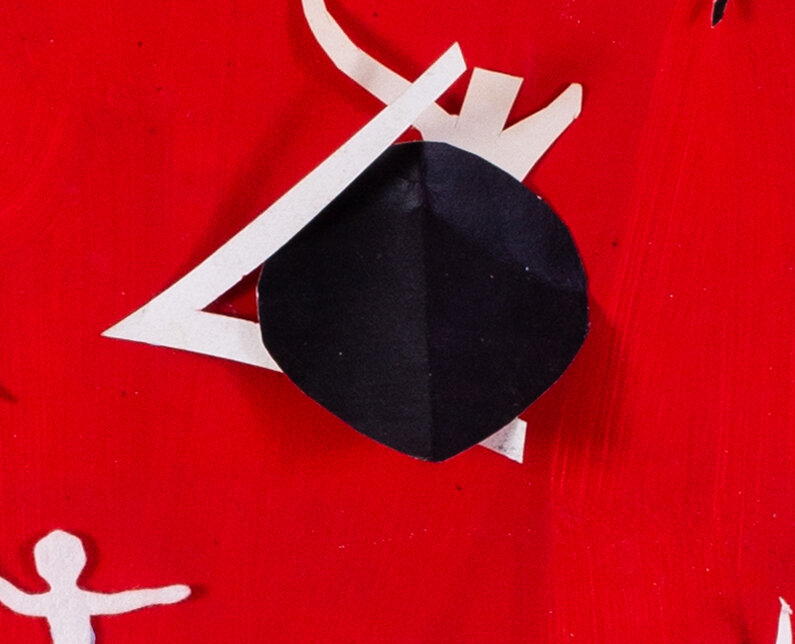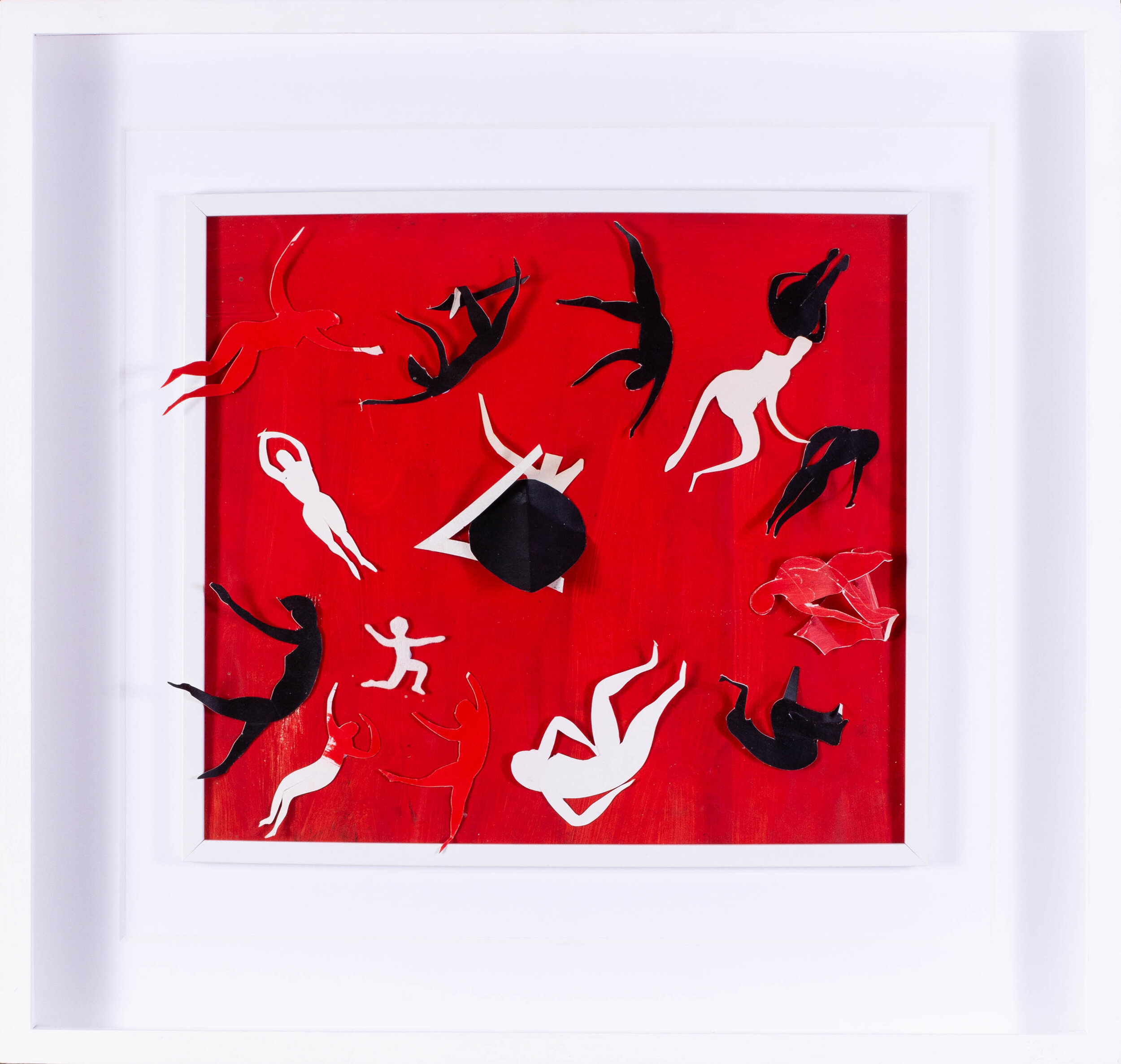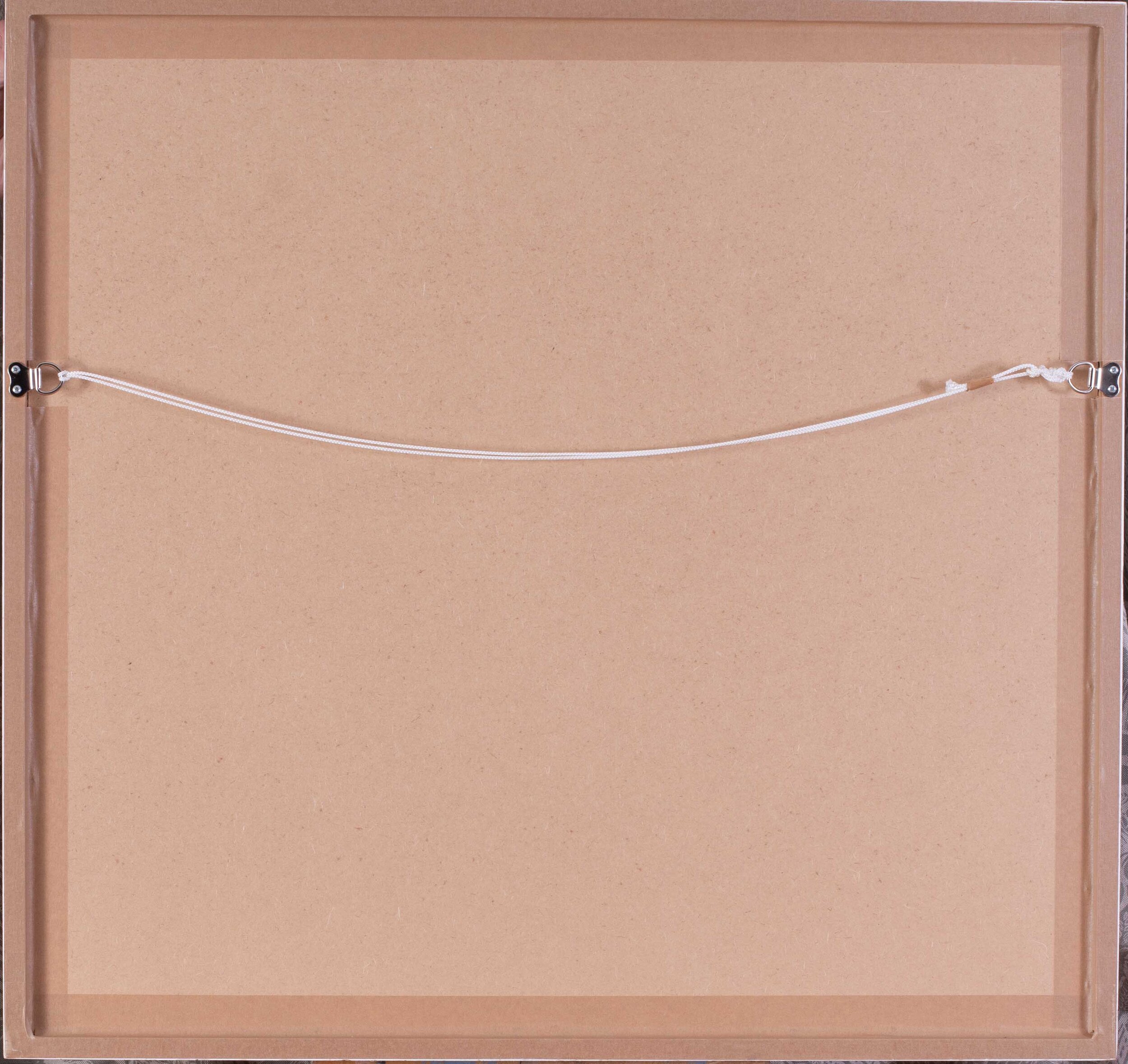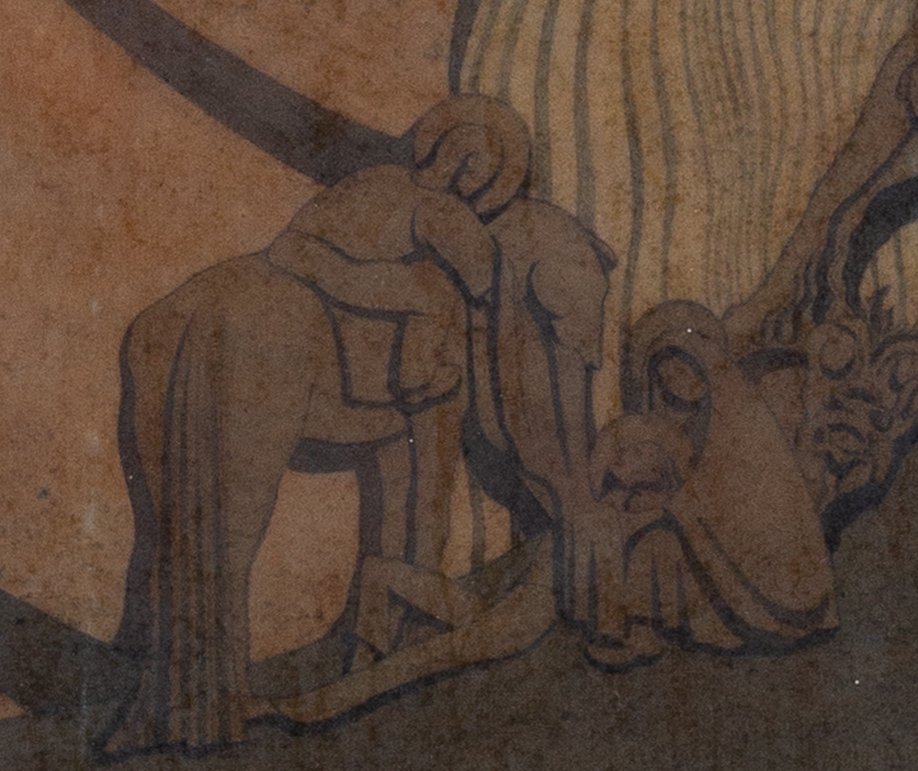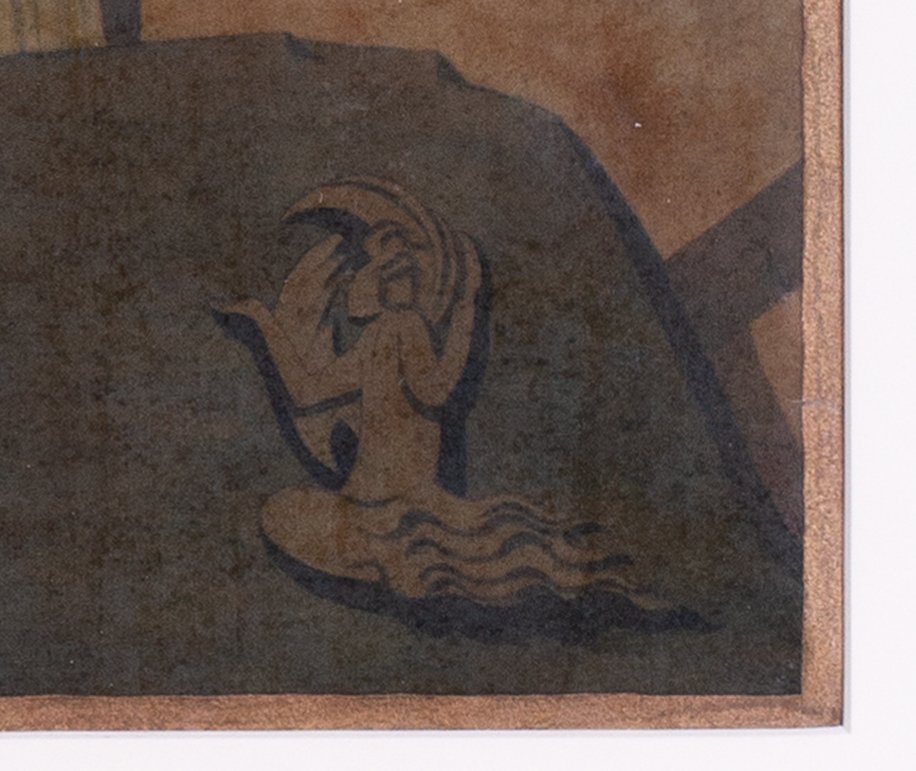Terry Frost, 'Dancing figure'
Terry Frost, (British, 1915 – 2003)
Dancing figure
Mixed media Collage
16.1/2 x 18.1/2 in. (42 x 47 cm.) to slip edge
Provenance: Created for and donated to the St. Ives Theatrical Program ‘Kidz R Us’
Sir Terry Frost, born in Leamington Spa, in 1915, was one of the most prominent artists of the St Ives School. Despite attending evening classes in art when he was sixteen, until the outbreak of war Frost worked at the manufacturing company Armstrong Whitworth & Co. He was captured in 1941, and sent to a prison camp where he befriended Adrian Heath. In the camp, he made early, crude woodcuts from material that he scrounged, and improvised tools. When Frost returned to England, he attended St Ives School of Art in 1946, under its founder, Leonard Fuller. He then studied at Camberwell School of Art (1947-51; helped by Heath), after long discussion with his wife, Kathleen, whom he had married in 1945. He was taught at Camberwell by Coldstream, who he disliked, and Pasmore, who he found inspirational. Frost’s work had initially been figurative, but, in this period, it became purely abstract. On the advice of Heath, Frost settled in St Ives in 1950, and became part of an influential group of artists, taking over Studio Number 4, next to Ben Nicholson's. He painted the first of his significant Walk Along the Quay series in this year, inspired by the boats that were moored in the harbour. In 1951, Frost was enlisted to help his neighbour, Barbara Hepworth, work on ‘Contrapuntal Forms’, the sculpture that she was to show at the Festival of Britain. The time away from his own studio and work in an unfamiliar medium spurred his later painted constructions and collages. He also met fellow artists Sam Francis and Roger Hilton. The following year, he had his first proper solo exhibition, at the Leicester Galleries. He also became a member of The London Group in 1957. This marked the start of greater recognition, both in Britain and abroad—in 1959, the Tate bought his work Khaki and Lemon (1956), and in 1960 he had a solo show in New York, where he was introduced to prominent Abstract Expressionists. These meetings prompted him to work on larger canvases. He also began to focus more on colour alone, and how it becomes a presence within the work. He developed this in a sculptural form in the 1970s, filling canvas tubes with polystyrene balls, using them to suggest that colour was spilling and twisting from the confines of conventional artworks. From 1952, Frost taught and lectured at various art colleges, including Bath, Coventry, Reading, and Leeds, something he continued to do until his retirement from the University of Reading in 1981. His teaching crucically gave him access to materials, printing presses, and other tools. He also taught overseas, in Canada, Norway, Sweden, Cyprus, and California. These posts obviously involved a significant amount of travel, and in 1974 Frost moved to Newlyn, Cornwall, for good. In 1992 Frost was elected a Royal Academician, and was knighted in 1998. He made a last trip to Venice with John Hoyland in 2001, before he died in 2003, leaving five sons and a daughter. His work remains extremely popular, and its abstract exploration of forms, line, and colour is still fresh and exciting. Shapes, such as the semicircles that interested Ben Nicholson, were a recurring motif throughout Frost’s career. However, each incarnation is innovative and engaging, his paintings invested with movement and a dynamic treatment of form.
Terry Frost, (British, 1915 – 2003)
Dancing figure
Mixed media Collage
16.1/2 x 18.1/2 in. (42 x 47 cm.) to slip edge
Provenance: Created for and donated to the St. Ives Theatrical Program ‘Kidz R Us’
Sir Terry Frost, born in Leamington Spa, in 1915, was one of the most prominent artists of the St Ives School. Despite attending evening classes in art when he was sixteen, until the outbreak of war Frost worked at the manufacturing company Armstrong Whitworth & Co. He was captured in 1941, and sent to a prison camp where he befriended Adrian Heath. In the camp, he made early, crude woodcuts from material that he scrounged, and improvised tools. When Frost returned to England, he attended St Ives School of Art in 1946, under its founder, Leonard Fuller. He then studied at Camberwell School of Art (1947-51; helped by Heath), after long discussion with his wife, Kathleen, whom he had married in 1945. He was taught at Camberwell by Coldstream, who he disliked, and Pasmore, who he found inspirational. Frost’s work had initially been figurative, but, in this period, it became purely abstract. On the advice of Heath, Frost settled in St Ives in 1950, and became part of an influential group of artists, taking over Studio Number 4, next to Ben Nicholson's. He painted the first of his significant Walk Along the Quay series in this year, inspired by the boats that were moored in the harbour. In 1951, Frost was enlisted to help his neighbour, Barbara Hepworth, work on ‘Contrapuntal Forms’, the sculpture that she was to show at the Festival of Britain. The time away from his own studio and work in an unfamiliar medium spurred his later painted constructions and collages. He also met fellow artists Sam Francis and Roger Hilton. The following year, he had his first proper solo exhibition, at the Leicester Galleries. He also became a member of The London Group in 1957. This marked the start of greater recognition, both in Britain and abroad—in 1959, the Tate bought his work Khaki and Lemon (1956), and in 1960 he had a solo show in New York, where he was introduced to prominent Abstract Expressionists. These meetings prompted him to work on larger canvases. He also began to focus more on colour alone, and how it becomes a presence within the work. He developed this in a sculptural form in the 1970s, filling canvas tubes with polystyrene balls, using them to suggest that colour was spilling and twisting from the confines of conventional artworks. From 1952, Frost taught and lectured at various art colleges, including Bath, Coventry, Reading, and Leeds, something he continued to do until his retirement from the University of Reading in 1981. His teaching crucically gave him access to materials, printing presses, and other tools. He also taught overseas, in Canada, Norway, Sweden, Cyprus, and California. These posts obviously involved a significant amount of travel, and in 1974 Frost moved to Newlyn, Cornwall, for good. In 1992 Frost was elected a Royal Academician, and was knighted in 1998. He made a last trip to Venice with John Hoyland in 2001, before he died in 2003, leaving five sons and a daughter. His work remains extremely popular, and its abstract exploration of forms, line, and colour is still fresh and exciting. Shapes, such as the semicircles that interested Ben Nicholson, were a recurring motif throughout Frost’s career. However, each incarnation is innovative and engaging, his paintings invested with movement and a dynamic treatment of form.
Terry Frost, (British, 1915 – 2003)
Dancing figure
Mixed media Collage
16.1/2 x 18.1/2 in. (42 x 47 cm.) to slip edge
Provenance: Created for and donated to the St. Ives Theatrical Program ‘Kidz R Us’
Sir Terry Frost, born in Leamington Spa, in 1915, was one of the most prominent artists of the St Ives School. Despite attending evening classes in art when he was sixteen, until the outbreak of war Frost worked at the manufacturing company Armstrong Whitworth & Co. He was captured in 1941, and sent to a prison camp where he befriended Adrian Heath. In the camp, he made early, crude woodcuts from material that he scrounged, and improvised tools. When Frost returned to England, he attended St Ives School of Art in 1946, under its founder, Leonard Fuller. He then studied at Camberwell School of Art (1947-51; helped by Heath), after long discussion with his wife, Kathleen, whom he had married in 1945. He was taught at Camberwell by Coldstream, who he disliked, and Pasmore, who he found inspirational. Frost’s work had initially been figurative, but, in this period, it became purely abstract. On the advice of Heath, Frost settled in St Ives in 1950, and became part of an influential group of artists, taking over Studio Number 4, next to Ben Nicholson's. He painted the first of his significant Walk Along the Quay series in this year, inspired by the boats that were moored in the harbour. In 1951, Frost was enlisted to help his neighbour, Barbara Hepworth, work on ‘Contrapuntal Forms’, the sculpture that she was to show at the Festival of Britain. The time away from his own studio and work in an unfamiliar medium spurred his later painted constructions and collages. He also met fellow artists Sam Francis and Roger Hilton. The following year, he had his first proper solo exhibition, at the Leicester Galleries. He also became a member of The London Group in 1957. This marked the start of greater recognition, both in Britain and abroad—in 1959, the Tate bought his work Khaki and Lemon (1956), and in 1960 he had a solo show in New York, where he was introduced to prominent Abstract Expressionists. These meetings prompted him to work on larger canvases. He also began to focus more on colour alone, and how it becomes a presence within the work. He developed this in a sculptural form in the 1970s, filling canvas tubes with polystyrene balls, using them to suggest that colour was spilling and twisting from the confines of conventional artworks. From 1952, Frost taught and lectured at various art colleges, including Bath, Coventry, Reading, and Leeds, something he continued to do until his retirement from the University of Reading in 1981. His teaching crucically gave him access to materials, printing presses, and other tools. He also taught overseas, in Canada, Norway, Sweden, Cyprus, and California. These posts obviously involved a significant amount of travel, and in 1974 Frost moved to Newlyn, Cornwall, for good. In 1992 Frost was elected a Royal Academician, and was knighted in 1998. He made a last trip to Venice with John Hoyland in 2001, before he died in 2003, leaving five sons and a daughter. His work remains extremely popular, and its abstract exploration of forms, line, and colour is still fresh and exciting. Shapes, such as the semicircles that interested Ben Nicholson, were a recurring motif throughout Frost’s career. However, each incarnation is innovative and engaging, his paintings invested with movement and a dynamic treatment of form.


